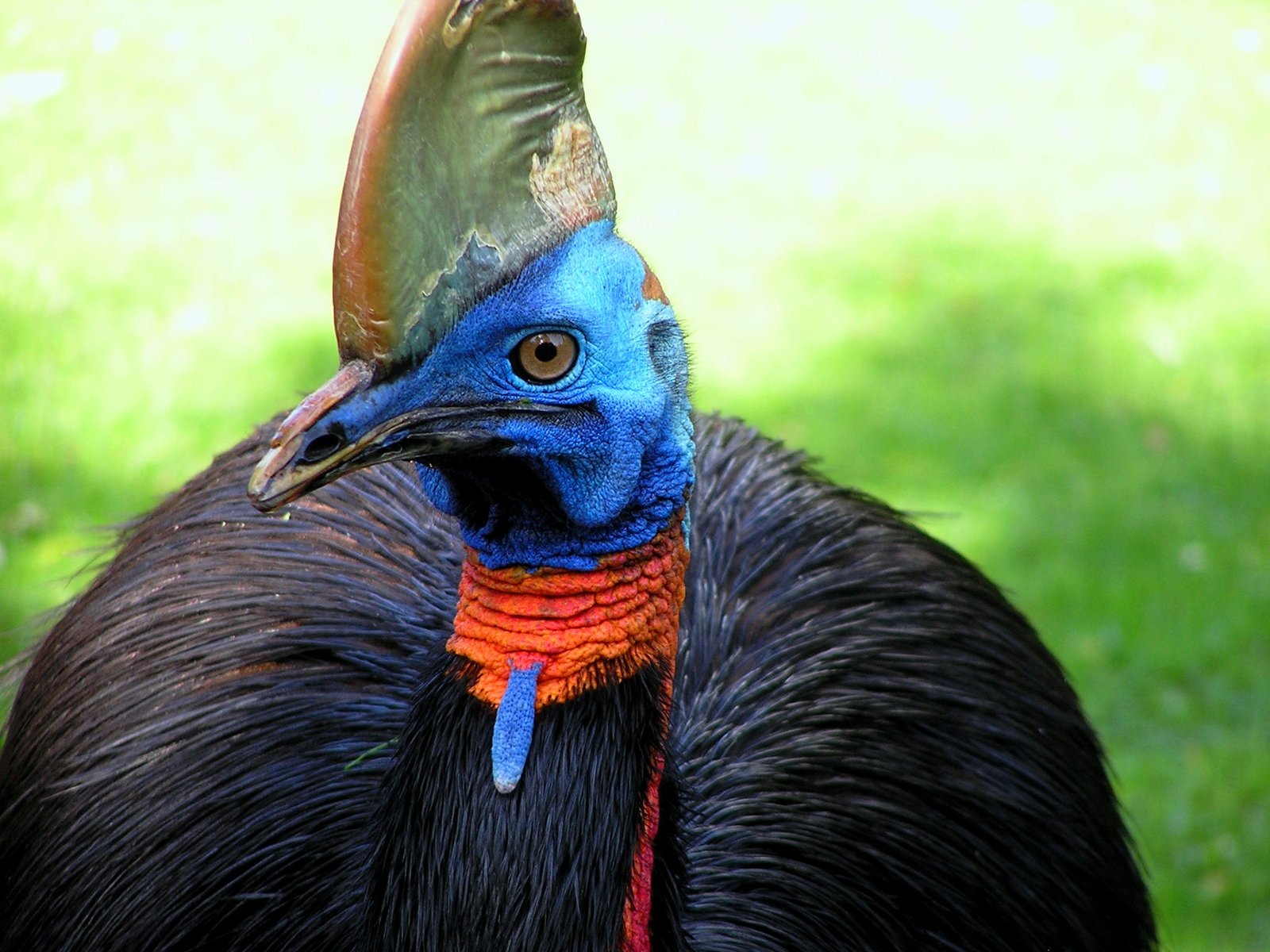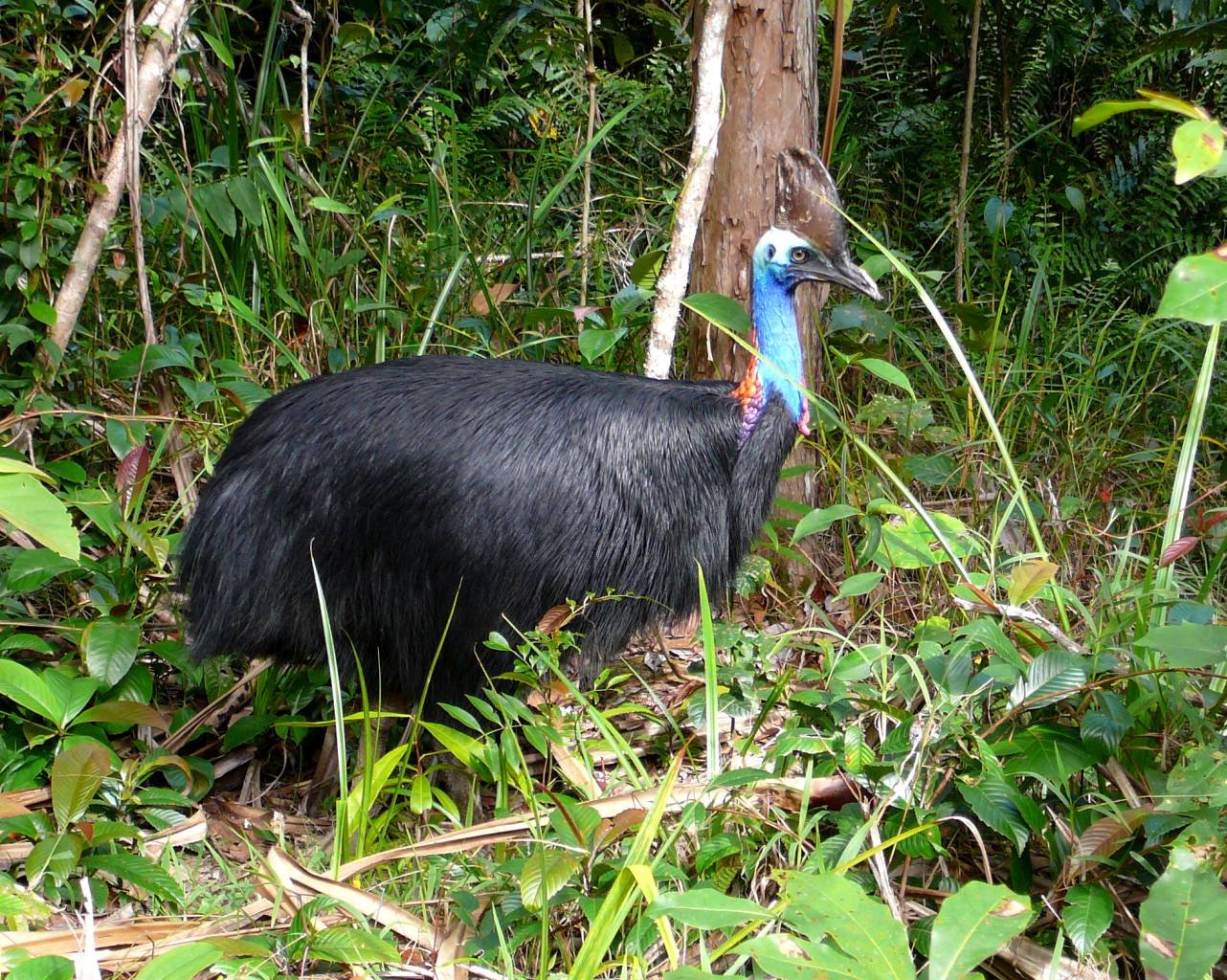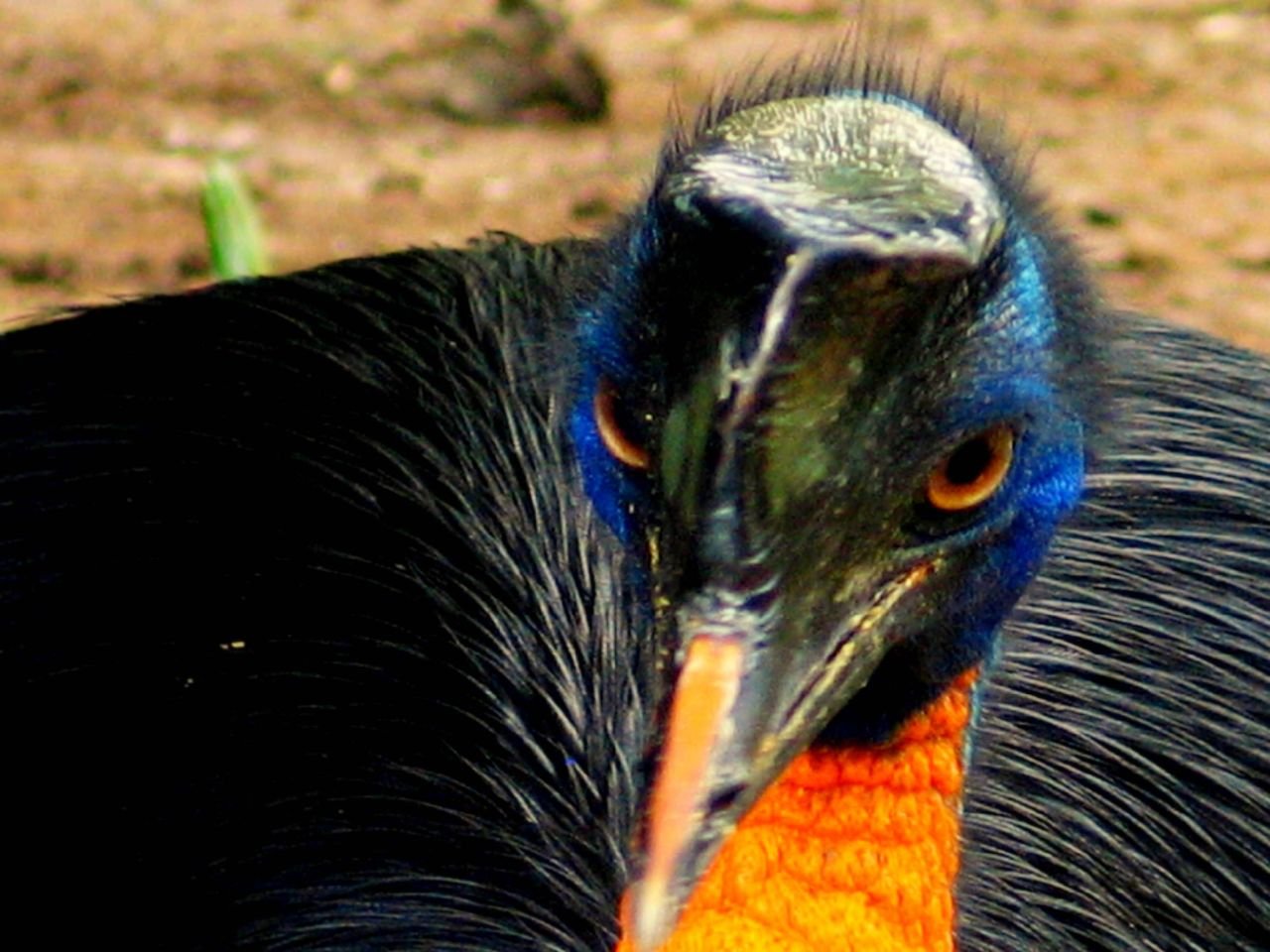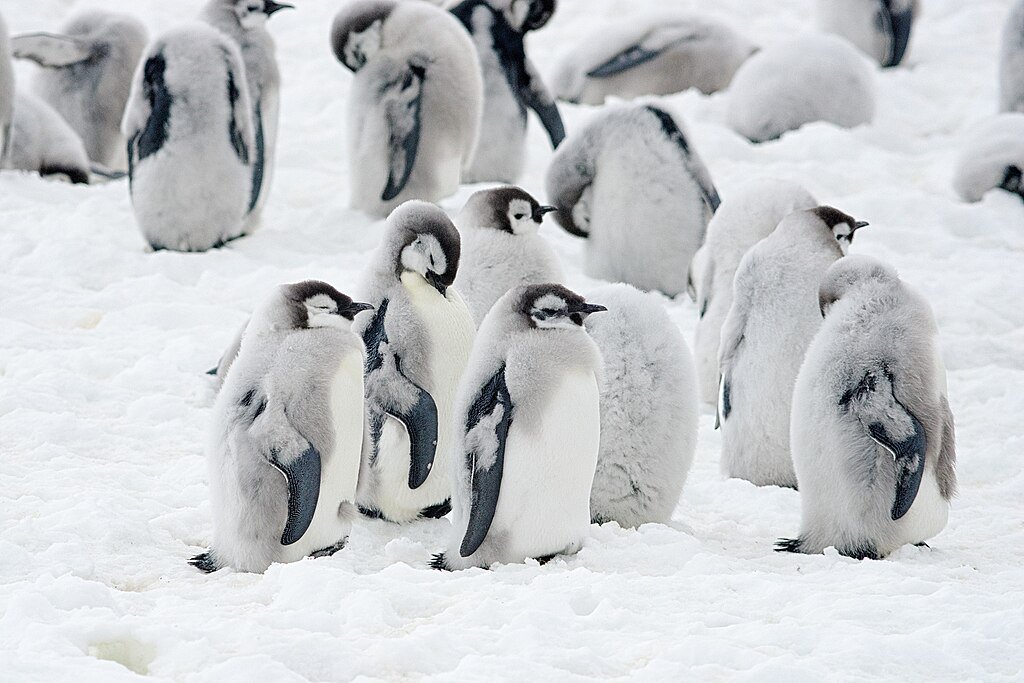Deep in the lush, tangled rainforests of Australia and New Guinea, a creature roams quietly, almost prehistoric in its presence. The cassowary, with its vivid blue skin, towering stance, and helmet-like casque, is not just an extraordinary sight—it is an ecological powerhouse. This bird, often dubbed the world’s most dangerous, is also one of the most vital, shaping entire forests with every step. Imagine a single animal so important that without it, the towering trees and thick underbrush would struggle to survive. The cassowary’s story is one of mystery, awe, and a kind of silent heroism rarely seen in the animal kingdom.
A Glimpse of the Rainforest Giant

Standing up to six feet tall and weighing as much as a small child, the cassowary is truly a giant among birds. Its glossy black feathers resemble a cloak, and its electric-blue neck and crimson wattles make it seem almost mythical. But perhaps the most striking feature is the casque—a hard, helmet-like structure atop its head—which adds to its imposing presence. Unlike any other bird, the cassowary moves with a mix of grace and caution, weaving through dense foliage as if it owns the forest. Its large, three-toed feet end in razor-sharp claws, a reminder of its wild, powerful nature. Encountering a cassowary in the wild feels like stepping back into the age of dinosaurs. It’s no wonder that local legends and stories are filled with awe and respect for this remarkable animal.
The Mysterious Life of the Cassowary

Despite their size and striking appearance, cassowaries are elusive and shy creatures. They spend most of their time hidden in the undergrowth, foraging for fruit and occasionally insects or small animals. Solitary by nature, cassowaries rarely tolerate the presence of others, except during the brief breeding season. Their secretive habits make them difficult to study, adding a layer of mystery to their lives. Cassowaries communicate with deep, booming calls that can echo through the rainforest, but they are more often heard than seen. Their secretiveness has left much of their behavior shrouded in mystery, igniting curiosity and fascination among researchers and wildlife enthusiasts alike. Every new discovery about cassowaries feels like uncovering a hidden treasure of the rainforest.
Seed Dispersal: The Forest’s Silent Gardener

Cassowaries play a role in the rainforest that few other creatures can match. As they wander, they consume a vast array of fruits—some as large as tennis balls—and swallow them whole. Inside their powerful digestive system, seeds are softened and prepared for germination, then deposited far from the parent tree. This process, called seed dispersal, is absolutely crucial for rainforest health. Without the cassowary, many large-seeded plants would struggle to spread or even survive. Scientists have found that over 70 species of rainforest plants depend almost entirely on cassowaries for dispersal. In a sense, every cassowary is a gardener, planting the next generation of towering trees and vibrant undergrowth as it roams. Their work is silent but essential, shaping the very future of the rainforest.
Rainforest Ecosystem Engineer

Cassowaries are more than just seed carriers—they are “ecosystem engineers.” Their movements help open up the forest floor, making way for new plants to grow. As they trample through the undergrowth, they create pathways that other animals use and light gaps where seedlings can sprout. By dispersing seeds over long distances, cassowaries ensure genetic diversity among plants, which helps forests recover from storms, fires, or human disturbance. In areas where cassowary populations have declined, scientists have noticed a worrying drop in plant diversity and regeneration. The loss of this one bird could set off a cascade of changes, shrinking the rainforest’s rich tapestry of life. Each cassowary is, in a very real sense, a keystone that holds the ecosystem together.
Unmatched Digestive Abilities

Cassowaries can swallow fruits that seem impossible for other animals to handle. Their throat and digestive tract are built to manage large, tough seeds, some of which are toxic or indigestible to other species. The cassowary’s stomach is like a specialized compost bin, breaking down fruit pulp and leaving seeds ready to sprout. Some seeds even require passage through a cassowary to germinate at all—a unique evolutionary partnership. This ability enables plants with massive or hard seeds to thrive in environments where most other seed dispersers would fail. Researchers have marveled at the wide variety of seeds found in cassowary droppings, often sprouting into young plants soon after. It’s a partnership millions of years in the making, and one that keeps rainforests alive and ever-changing.
Fascinating Family Life
Cassowary parenting turns nature’s expectations upside down. After laying her eggs, the female departs, leaving the male to incubate the eggs and raise the chicks. For about fifty days, the devoted father sits on the nest, rarely leaving for food. Once the chicks hatch, he fiercely protects and guides them for up to nine months, teaching them how to find food and navigate dangers. This reversal of parenting roles is unusual in the bird world and highlights the cassowary’s unique approach to survival. Young cassowaries are covered in brown stripes, which help them blend into the forest floor, and follow their father’s every move. The bond between father and chicks is strong, a touching example of dedication in the wild. Watching a cassowary family in the wild is a rare and unforgettable sight, a testament to the resilience of life in the rainforest.
Cassowary Myths and Cultural Significance

For Indigenous peoples of Australia and New Guinea, the cassowary is much more than a bird—it’s a powerful symbol woven into stories and traditions. Many cultures regard the cassowary with a mix of fear and reverence, seeing it as a guardian of the forest or a messenger from the spirit world. Traditional dances, songs, and masks often feature the cassowary’s distinctive appearance, celebrating its strength and resilience. In some regions, cassowary feathers and bones are used in rituals and ceremonies, reflecting the deep respect for this enigmatic animal. These cultural connections highlight the cassowary’s role not just in nature, but in the human imagination. The bird’s presence is a reminder of the ancient bond between people and the wild places they call home.
The “World’s Most Dangerous Bird”

Cassowaries have earned a reputation for being dangerous, and it’s not without reason. With powerful legs and dagger-like claws, they can defend themselves fiercely if threatened. Attacks on humans are rare, but when they occur, the results can be serious—even fatal. Most incidents happen when people try to feed or corner the bird, triggering its instinct to fight or flee. The cassowary’s fearsome reputation is a warning to respect wild animals and their space. However, these birds are not aggressive by nature; they prefer to avoid conflict and quietly slip away when disturbed. Understanding their behavior helps prevent dangerous encounters and fosters a healthier relationship between people and cassowaries. They are a living reminder that wildness still exists, demanding respect and caution.
Conservation Challenges and Hope
Despite their importance, cassowaries face mounting threats. Habitat loss due to logging, agriculture, and development is shrinking their rainforest home. Roads and vehicles pose deadly risks, as do invasive species like wild pigs and dogs. Climate change adds further pressure, altering the forests cassowaries depend on. Conservationists are working tirelessly to protect cassowary habitats and educate communities about coexistence. Captive breeding programs, wildlife corridors, and stricter road controls are just some of the strategies employed to ensure their survival. The fate of the cassowary is closely tied to the fate of the rainforest itself. Saving these birds means safeguarding an entire ecosystem, a challenge that inspires hope and action across the world.
What the Future Holds for Cassowaries and Rainforests

The cassowary’s future hangs in the balance, but there are signs of hope. Community-led projects and global attention are helping turn the tide for these remarkable birds. Ecotourism, when managed responsibly, is creating incentives to protect cassowary habitats and raise awareness about their vital role. Children are learning about cassowaries in schools, and local leaders are championing conservation efforts. Every cassowary saved is a victory not just for the species, but for the rainforest and all the life it supports. The story of the cassowary is a powerful reminder that even the most mysterious creatures are connected to our own well-being. Would you have guessed that a single bird could hold the fate of an entire forest in its claws?




